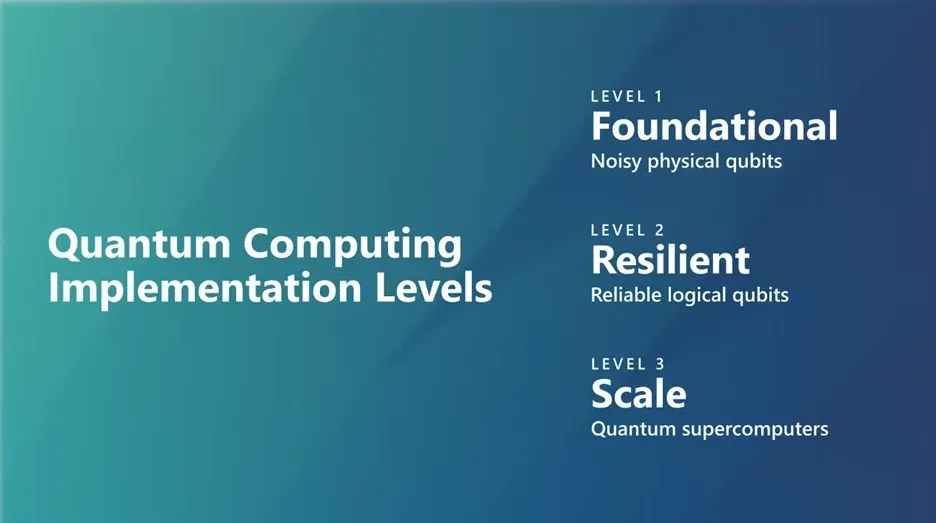The evolution of quantum computing is moving at breakneck speed! Microsoft and Quantinuum have just announced a major achievement in quantum error correction, signaling a leap forward into the next phase of quantum technology. This breakthrough demonstrates the potential to overcome a critical barrier on the road towards practical quantum computers.
The Three Levels of Quantum Computing
Dr. Krysta M. Svore at Microsoft Quantum breaks down quantum computing's development into three levels:
- Level 1: Foundational – The early stage, where we focus on building qubits and benchmark performance using quantum volume.
- Level 2: Resilient – Error correction takes center stage in this level. Here, the goal is to create reliable logical qubits, formed by combining multiple physical qubits, to achieve significantly better performance. A key requirement for entering this level is the demonstration of uniquely "quantum" features such as entanglement. Progressing beyond this level will be marked by the ability to perform large-scale, high-fidelity computations involving hundreds of logical qubits.
- Level 3: Scale – Quantum computers become powerful enough for real-world applications. This level requires hundreds or thousands of logical qubits with extremely low error rates and high operational speeds.
Quantinuum and Microsoft's Quantum Error Correction Success
The recent news release by the two companies reveals the following highlights:
- High Fidelity: Quantinuum's quantum hardware demonstrates an amazing 99.8% fidelity in two-qubit gate operations, meaning near-perfect execution of quantum logic.
- Reliable Logical Qubits: Microsoft's error correction tools have enabled the creation of logical qubits with error rates 800 times lower than their physical counterparts. This is a significant validation of Level 2 concepts.
- Proof of Concept: These results impressively demonstrate the ability to suppress errors and run 14,000 instances of a quantum circuit error-free.
Why This Breakthrough Matters
- Pathway to Scalability: Error correction is the key to achieving truly useful quantum computers. This news suggests that we're on the right track to create large-scale systems.
- Error Correction Works: We now have solid evidence that the theoretical concepts of quantum error correction can indeed be implemented.
- Potential for Acceleration: This achievement could significantly shorten the timeline for practical quantum computing, bringing breakthroughs in materials science, drug discovery, and more, closer than we thought.
Level 2 Criteria and Beyond
Dr. Svore elaborates on the significance of Microsoft and Quantinuum's progress, outlining the criteria for Level 2 resilient quantum computation and what lies ahead:
- Key Requirements: To truly demonstrate Level 2, there must be a significant reduction in errors for logical qubits compared to physical qubits, and the ability to generate entanglement between multiple logical qubits.
- Exit Criteria: Moving beyond this level will be marked by the ability to perform large-scale, high-fidelity computations involving hundreds of logical qubits.
- Scalability and Performance Goals: A universal set of composable logical operations with an error rate of ~10-8 or better will be necessary. Ultimately, a quantum supercomputer will be achieved when we can demonstrate 1000 logical qubits operating at a mega-rQOPS (reliable quantum operations per second) with a logical error rate of 10-12 or better.
The combined advancements from Microsoft and Quantinuum are pushing the quantum computing field forward with remarkable speed. While challenges remain, this milestone underscores the growing potential to solve real-world problems with powerful, resilient quantum computers.



Member discussion: